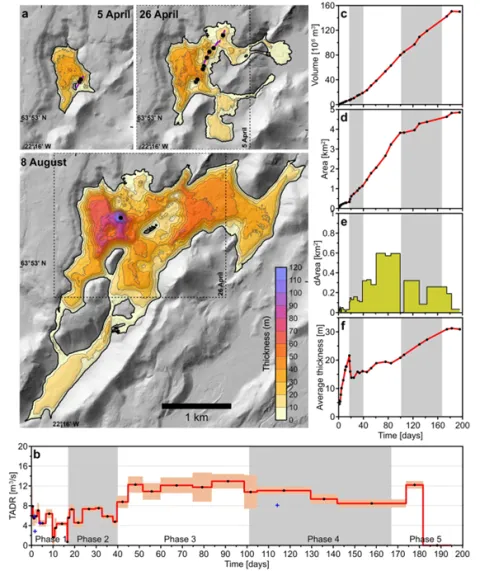
The results of multiple surveys of lava flow rate with unprecedented accuracy and speed of delivery published in a paper in Geophysical Research Letters
The eruption in Fagradalsfjall in 2021 marked the end of a period of almost eight centuries with no volcanic activity on the Reykjanes Peninsula. The eruption that started on the 3rd of August at a similar place on the peninsula confirms the onset of a new episode of activity. How frequent eruptions will be in the coming years or decades is not possible to predict, time will tell.
Lava-producing eruptions on the Reykjanes Peninsula occur close to population centers and important infrastructure. They therefore call for detailed monitoring. A new scientific paper published in Geophysical Research Letters presents the results of measurements and mapping of lava production and distribution in the 2021 eruption. The open access paper can be found here.
The work was carried out by a group of scientists at the Institute of Earth Sciences (IES, University of Iceland), the Icelandic Institute of Natural History (NI) and National Land Survey of Iceland (LMÍ) in collaboration with the Department of Civil Protection and Emergency Management at the National Commissioner of the Icelandic Police, and colleagues at various other institutions, both in Iceland and abroad.
Precise digital elevation models were compiled at regular intervals, partly from satellite data but mostly from aerial photography. Processing of the data was carried out in the hours after collection and the results usually presented on the same day. Lava production rate could be estimated from the changes in land elevation between surveys. The maps compiled and the associated data on lava production rate played a key role in assessing the eruption and estimating risks posed by the flowing lava. They were used by the authorities and scientists, as well as other people visiting the area. With this work a new step was taken in the monitoring of lava-producing eruptions, as this is the first time where it has been possible to map the lava fast enough to use the results as the principal basis for estimates of hazard and risk in near real time.




